How To Use the Gap Spreader
The management software, TRUCKeSERVICES, provides unique tools like the Gap Spreader to facilitate your IFTA filing needs. Below is a breakdown of when and how to correctly use the Gap Spreader tool.
IFTA Best Practice Guide
The IFTA Best Practice Guide describes different types of Distance Gaps and recommends the best method for closing such gaps. They include:
- Single Trip Gaps – Calculate actual miles traveled by state and add to the truck distance record. The PC Miler input method should be used in this situation.
- Local Gaps – these are small gaps between the end of one trip and the beginning of another trip. Add gaps to jurisdiction in which the destination and origin are recorded. The Gap Spreader will spread gaps less than 100 miles to the base
- Untraceable Gaps – gaps larger than one trip or that encompass more than one jurisdiction may be apportioned to the jurisdictions into which the vehicle has a history of travel.
- Large Gap distances – where none of the above methods are suitable, be as fair as possible. The gap may be apportioned to each jurisdiction based on the percentage of audited distance from the driver’s trip reports.
| Type of Gap | Best Practice Guide Recommends | TeS Solution |
| Single Trip Gap | Calculate actual miles by state | PC Miler Input Tool |
| Local Gaps | Add to jurisdiction in which last destination and next origin were recorded | Gap Spreader-when less than 100 miles all miles are assigned to the base jurisdiction of the fleet. |
| Untraceable Gaps | Apportion to jurisdictions into which the vehicle has a history of travel | Gap Spreader |
| Large Gap distances | Apportion to each jurisdiction based on the percentage of audited distance from the drivers trip reports. | Gap Spreader |
Gap Spreader
The Gap Spreader tool in TRUCKeSERVICES is best used for Local Gaps, Untraceable Gaps and Large Gap distances. It will use the travel history of the truck in the selected quarter to apportion gap miles to states of travel. If the gap is less than 100 miles, the gap is assumed to be a Local Gap and apportioned to the base state.
If there is no travel history for a truck in a quarter the user will have to manually calculate a proration based on history determined from a previous period. The “IRP Summary Report” can be utilized to gather travel history for the fleet for any range of dates that most closely represent current operations of the truck.
And don’t forget to consider imputing Gap Fuel if necessary.*
User judgement is required when using this tool as it will not always be the best method available to close gaps. Auditors are guided to consider other factors that may make a proration of distance more fair to all jurisdictions.
This video provides you with a visual demonstration of what the GAP Spreader is and how to use it in TRUCKeSERVICES.
Refer to the IFTA Best Practice Guide for additional guidance. Don’t hesitate to call us if you have any questions or need further assistance. Call 844-343-3453 today!
Try Us For Free
Your content goes here. Edit or remove this text inline or in the module Content settings.
Follow Us









